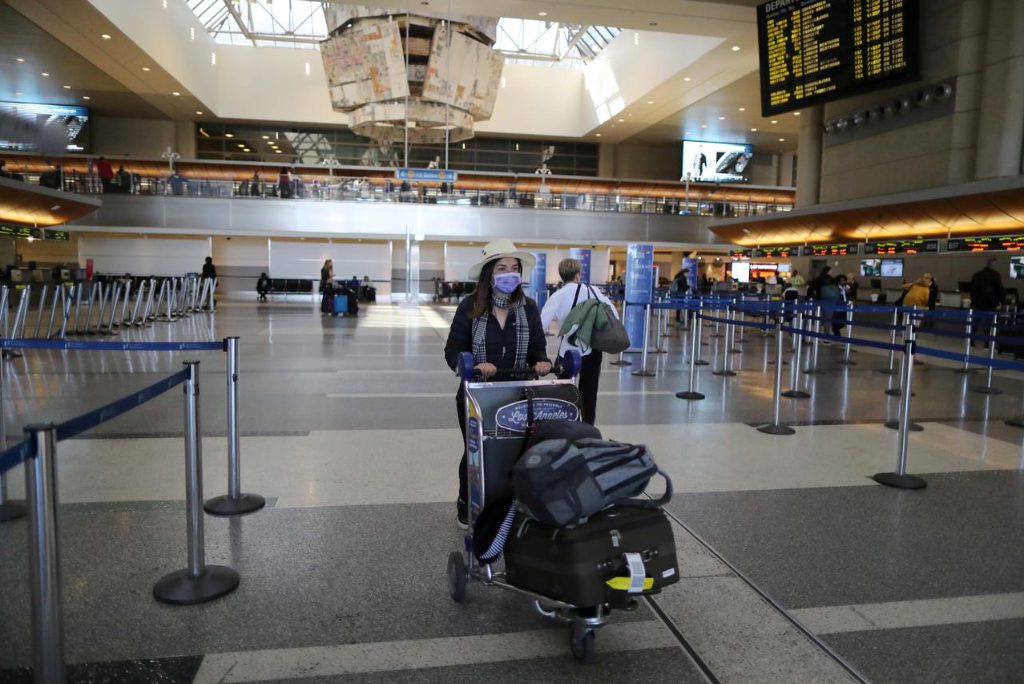Skift Take
Mind the gap.
The pandemic may spur airports to use technology to ensure physical distancing for virus-wary travelers. But many airports are struggling to figure out how they’ll efficiently protect passengers and staff during the pandemic without creating impossible lines.
Not everyone is on board. Social distancing of passengers at airports is “physically impossible,” said Heathrow Airport CEO John Holland-Kaye. A series of alternative steps, such as temperature screenings of passengers and intensified sanitation efforts, would achieve safety goals instead, Holland-Kaye argued.
Yet many tech vendors believe passengers will expect airports to do more to minimize crowding. A case in point is CrowdVision, a computer vision company that uses video cameras and machine learning to analyze crowds and checkpoints at airports. This week the company announced its takeover of Iinside, which uses Lidar, or safe, invisible laser beams, to detect moving objects.
The combined company, CrowdVision, is based in Los Angeles, and its clients include 18 of the 34 largest hub airports, plus some other airports such as London Heathrow and Tokyo’s Narita. CrowdVision uses both computer vision and Lidar to help airports make sure passengers and staff remain at safe distances from each other.
“Some airports like tech as a way to minimize having their staffs be like scolding teachers wagging their fingers at passengers,” said Sam Kamel, president of the Americas at CrowdVision. “Electronic signs and other cues that are triggered by sensors and cameras de-personalizes the messages to travelers to comply with guidance.”
Up until now, most airports relied on historical data and their estimates to predict passenger arrivals and flows. But drastically changed flight schedules, likely new procedures for health screenings, and changed passenger behavior might scramble such guestimates. Technologies from CrowdVision and other companies might help.
A side note: Skift named CrowdVision one of its top travel startups to watch last year. A spokesperson said the company hasn’t raised financing since the seed round from Amadeus and Oaktree Capital.
Get the Latest on Coronavirus and the Travel Industry on Skift’s Liveblog
Other large providers of airport tech include Veovo, whose passenger density management service uses a suite of tools. For terminal halls, blanket coverage with 3D cameras costs too much. So Veovo offers a mix of technologies, including sensors that interpret the patterns of Wi-Fi and Bluetooth signals emitted from passenger smartphones.
Veovo also uses artificial intelligence to model data and predict changes in passenger flows.
Xovis has already installed sensors primarily for wait-time measurement and passenger flow tracking at more than 90 airports across the globe. A recent software upgrade allows the airports to populate a “contagion map” to display areas at risk for travelers and to let airports test measures for physical distancing.
Some vendors argue that speeding up processes can reduce chokepoints from forming, and that making as many of today’s digital touch-points “touch-less” may be one way to reduce the spread of coronavirus.
At Hartsfield–Jackson Atlanta International Airport, Delta Airlines has worked with the U.S. Customs and Border Protection and the Transportation Security Administration (TSA) to come up with a curb-to-gate passenger identification process.
Many international travelers at Atlanta can opt to use face recognition technology to check-in at self-service kiosks, drop bags at the check-in counters, go through the TSA checkpoint, and board a flight without requiring the passenger to hand over physical ID cards or boarding passes to officers and agents. The reduced interactions can improve hygiene, argues NEC, a maker of some of the technology used in the effort.
Another way to avoid congestion might be to adopt virtual queues, meaning that passengers make reservations online in advance and proceed to different airport points via timed entry. Accesso is one vendor that provides virtual queuing services for theme-parks and other companies managing passenger flows. While some airport restaurants already offer advance ordering via their own mobile apps or third-party apps like Grab, others might adopt it also to encourage less clustering of patrons.
Digital technology isn’t the only solution, of course. Seattle-Tacoma International Airport is trying a range of practical measures. Like at many other airports, Sea-Tac has removed many seats at gates and installed plastic screen “sneeze guards” to shield workers who frequently contact passengers at stationary spots. The airport is also limiting the number of travelers that can be in each train car or vehicle that shuttles passengers from point-to-point on its grounds.
At San Francisco International Airport, passengers can operate check-in kiosks using their own mobile devices without the need to touchscreens on the airport’s hardware but picking up receipts for checked luggage, thanks to tech from SITA (Société Internationale de Télécommunications Aéronautiques), a significant provider of technology to airports worldwide.
This technology has been successfully tested and demonstrated, but the next step is for airlines to modify their own applications to enable this capability for their customers, a spokesperson for the airport said.
SITA believes robots will also help add flexibility. It has been testing a check-in kiosk that rolls to busy areas as needed to reduce crowding. Perhaps the ideal solution is for people to have travelers do the traveling for them.
The Daily Newsletter
Our daily coverage of the global travel industry. Written by editors and analysts from across Skift’s brands.
Have a confidential tip for Skift? Get in touch
Tags: airlines, airport design, airport lounges, airport security, airport technology, airports, startups, u.s. airports
Photo credit: A woman walks through an international terminal at Los Angeles International Airport on March 11, 2020. Lucy Nicholson / Reuters
